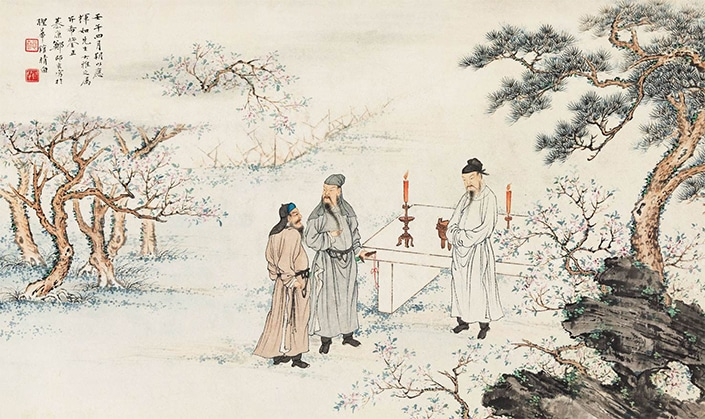
Tomb Sweeping Day, or Qingming, is often at the beginning of April.
The traditional activity is ancestor worship(祭祖). It has been there for a long time from old times. People clean and sweep the graves(坟墓) of their ancestors. At the same time, they bring offerings(供品) of food, like fruits, sweets, wine and meat. They also bring other offerings, like “ghost money”(冥币).
People fly kites during Tomb Sweeping Day, too. In the past, people cut the kite line and let the kite fly away. People believed that it could take away bad luck.
During Tomb Sweeping Day, children love playing on the swings(秋千) best. Playing on the swings has a long history and started in the north of China. It is also an activity during the Dragon Boat Festival.
Then, Qingming is also a good time for people to plant trees and go for a walk in the country in spring. Both the sun and the spring rain make it wonderful to plant and go for a walk.
本时文内容由奇速英语国际教育研究院原创编写,未经书面授权,禁止复制和任何商业用途,版权所有,侵权必究!(作者投稿及时文阅读定制请联系微信:18980471698)
1.What does the underlined word “traditional” mean in Chinese?
A 守旧的.
B 改良的.
C 传统的.
D 优秀的.
解析:选C。C词义猜测题。根据第二段“It has been there for a long time from old times.”说明祭祖这个活动存在很久了,即已经成为传统、惯例了。故选C。
2.What is thought to take away bad luck?
A A swing.
B Flying kites.
C Eating offerings.
D Kites flying away.
解析:选D。D细节理解题。根据第三段“People believed that it could take away bad luck.”可知过去的人认为把风筝线剪断,让风筝随风飘走会带走霉运。故选D。
3.What’s kids’ favorite activity during Tomb Sweeping Day?
A Ancestor worship.
B Planting trees.
C Flying kites.
D Playing on the swings.
解析:选D。D细节理解题。根据第四段“During Tomb Sweeping Day, children love playing on the swings(秋千) best.”可知清明节期间,孩子们最喜欢的活动是荡秋千。故选D。
4.How many Qingming activities are mentioned(提及) in the text?
A Three.
B Four.
C Five.
D Seven.
解析:选C。C细节理解题。根据全文可知,文章提到的清明的活动有:祭祖、放风筝、荡秋千、植树和踏青,共五种。故选C。
5.In which part of a newspaper can we read this text?
A Culture.
B Sports.
C Person.
D Travel.
解析:选A。A文章出处题。文章围绕清明节展开,讲述了几个清明节的习俗,属于传统文化,最可能在文化版块看到。故选A。